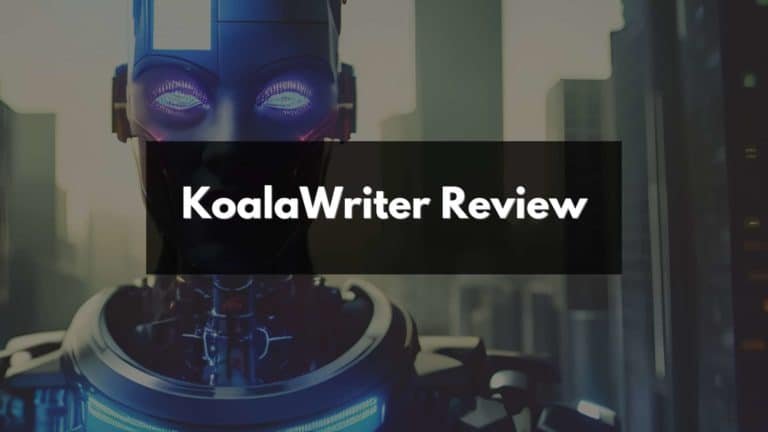Can TextCortex Pass Originality.ai Detection?
Navigating the world of artificial intelligence makes it challenging to find reliable AI writing tools. I’ve been there, scrutinizing numerous platforms, and one interesting fact is that TextCortex claims to pass Originality.ai detection.
In this blog post, we will discuss how effective TextCortex is in passing AI content detection and provide tips for avoiding detection. So let’s dive into this intriguing topic!
Key Takeaways
- TextCortex is an impressive AI writing assistant that claims to pass Originality.ai detection.
- TextCortex offers key features such as powerful AI generation capabilities, built – in plagiarism checking, and readability enhancement.
- Potential challenges in AI content detection include evolving AI technology, mimicking human writing style, text revision techniques, limited training data, false positives, lack of standardization among detectors, and a constant cat-and-mouse game between writers and detection tools.
Overview of AI Content Detection Tools
AI Content Detection Tools include Originality.ai, Hugging Face, Gltr.io, Writer.com, and Willieai.com.
Originality.ai
Originality.ai is a state-of-the-art AI detection tool. Using GPT-4 technology, it evaluates texts for signs of AI generation, plagiarism and readability issues. The intent behind this software is to ensure the authenticity of written content coming from valid human sources rather than artificially created pieces.
It’s notable that there have been cases of false positives reported, indicating a need for careful interpretation of results. Known as an efficient litmus test for distinguishing between man-made and machine-generated compositions, Originality.ai continues to evolve its algorithms.
On one occasion, Ronni Souers put the software through meticulous testing, particularly exploring its capabilities in discerning AI-produced write-ups.
Hugging Face
Hugging Face is another AI tool that offers a wide range of features for content creation. It includes an AI assistant called ChatGPT, which can help generate ideas and assist in writing.
Hugging Face also provides language model classifiers to aid in text revision and improve readability. With its advanced AI recognition capabilities, Hugging Face has gained popularity among writers looking to create authentic content while bypassing AI detection algorithms.
Whether you’re working on a blog post, article, or any other type of written content, Hugging Face can be a valuable resource in your quest to pass Originality.ai detection and ensure the authenticity of your work.
Gltr.io
I have also come across Gltr.io, an AI content detection tool that can be helpful for writers looking to ensure their work passes AI detection. This platform uses language model classifiers and AI-based detection algorithms to analyze the authenticity of text.
Gltr.io focuses on detecting plagiarism and readability issues in texts generated by AI models like GPT-3 and ChatGPT. It offers a straightforward interface where users can input their text and receive feedback on its originality.
With Gltr.io, writers can benefit from another effective tool in their quest to produce high-quality, authentic content.
Writer.com
I use Writer.com as my go-to AI content writer when I need to ensure that my work passes AI detection. With its advanced algorithms and language model classifiers, Writer.com produces high-quality, authentic content that is indistinguishable from human writing.
Whether it’s creating blog posts, articles, or social media captions, Writer.com consistently delivers original and plagiarism-free text. The AI assistant helps me save time and effort by generating ideas and providing suggestions while maintaining the desired level of readability.
When it comes to finding an AI content writer that can pass AI detection with flying colors, Writer.com is my top choice.
Willieai.com
I have also come across Willieai.com, an AI content writing platform that claims to be able to pass Originality.ai detection. With its powerful AI algorithms, Willieai.com promises to provide unique and authentic content that is indistinguishable from human-written text.
It offers various pricing options to suit different needs and budgets. This platform could be a valuable resource for those looking for an AI content writer that can bypass AI detection tools while maintaining high quality and originality in their written content.
TextCortex Review
TextCortex is an AI assistant that provides text revision and language model classifiers to ensure the authenticity and quality of written content.
Quick review of TextCortex
I have thoroughly reviewed TextCortex, and it’s safe to say that this AI writing assistant is impressive. Not only does it claim to pass Originality.ai detection, but it also offers a free version for users to try out without any payment required.
With TextCortex, you can significantly reduce the time and effort spent on creating various types of content. Whether you need help with generating ideas for plots or characters, this AI assistant has got you covered.
It’s no wonder that people interested in finding an AI content writer that can pass AI detection turn to TextCortex for its powerful capabilities.
Key features of TextCortex
TextCortex offers a range of key features that make it an ideal AI writing assistant for those looking to pass AI detection. These features include:
- Powerful AI generation capabilities: TextCortex utilizes advanced AI algorithms, including GPT-4, to generate high-quality and authentic texts.
- Plagiarism checking: The software includes a built-in plagiarism detection tool that ensures content is original and not copied from other sources.
- Readability enhancement: TextCortex helps improve readability by analyzing the structure, grammar, and vocabulary of the generated text, resulting in well-crafted content.
- User-friendly interface: The platform is designed with an intuitive interface, making it easy for users to navigate and utilize its features effectively.
- Pricing options: TextCortex offers flexible pricing options, including a free version that allows users to access basic functionality without any payment.
Pricing options
TextCortex offers several pricing plans to meet various user needs, from a free basic plan to premium options with additional features.
| Pricing Plan | Price | Included Features |
|---|---|---|
| Free | $0 | Basic AI assistance, limited content generation |
| Basic | $29/month | Enhanced AI assistance, unlimited content generation, priority support |
| Premium | $99/month | All Basic features, advanced AI assistance, premium customer support |
The free plan of TextCortex is not just a trial; you can continue using it without paying. However, for those who need enhanced features and more comprehensive AI assistance, the Basic and Premium plans are excellent options. They offer a spectrum of advanced capabilities designed to streamline your writing process, as well as premium customer support for any assistance you might need.
Can TextCortex Pass Originality. ai Detection?
In this section, we will explore the accuracy of TextCortex and discuss potential challenges in AI content detection. We will also provide tips to avoid AI detection as a writer.
Exploring the accuracy of TextCortex
TextCortex claims to be able to pass Originality.ai detection, but how accurate is it really? As an AI writing assistant, TextCortex aims to help users create various types of content while reducing their workload.
However, there are potential challenges when it comes to AI content detection. Originality.ai uses advanced algorithms and language model classifiers to detect AI-generated texts, plagiarism, and readability issues.
While some users have reported false positives with the tool, TextCortex continues to position itself as a reliable choice for those seeking an AI writer that can pass AI detection tests.
Potential challenges in AI content detection
As an AI content writer, I understand the potential challenges in AI content detection. Here are some important factors to consider:
- Evolving AI technology: AI text generation models like GPT-3 and ChatGPT are constantly improving, making it harder for AI detectors to accurately identify AI-generated texts.
- Mimicking human writing style: Advanced language model classifiers can make AI-generated content appear more natural and similar to human writing, making it challenging for AI detectors to differentiate between the two.
- Text revision techniques: Writers can use tools like QuillBot or TextCortex to revise their content, which can alter the original text just enough to bypass AI detection algorithms.
- Limited training data: AI detectors rely on large datasets to determine authenticity and detect plagiarism. If an AI content writer uses unique or obscure sources of information, it may be difficult for the detector to accurately assess its originality.
- False positives: Some writers may experience false positives with certain AI detection tools, where their genuine work is mistakenly flagged as AI-generated or plagiarized. This can create unnecessary hurdles for legitimate writers trying to pass through these detectors.
- Lack of standardization among detectors: Different AI content detection tools use varying algorithms and criteria to determine authenticity. This lack of standardization makes it difficult for writers to adapt their writing styles consistently across multiple platforms without triggering detection.
- Cat-and-mouse game: As technology progresses, both AI writers and detection tools will continue to innovate, leading to a constant back-and-forth battle between those trying to pass detection and those trying to catch them.
Tips to avoid AI detection as a writer
As an AI content writer looking to pass AI detection, I have found a few tips that can help you stay undetectable. Here they are:
- Understand the algorithms: Familiarize yourself with the AI-based detection algorithms used by tools like Originality.ai. This knowledge will help you identify potential red flags and avoid them.
- Use diverse sources: Incorporate information from a wide range of reliable sources to make your content more authentic and less likely to be flagged as AI-generated.
- Vary your writing style: Experiment with different tones, sentence structures, and vocabulary choices to make your writing sound more human and less machine-generated.
- Proofread and edit carefully: Take the time to thoroughly review your work for grammar, spelling, and formatting errors. This attention to detail can help your content appear more natural and less algorithmically generated.
- Introduce personal experiences: Share personal anecdotes or real-life examples in your writing to add a human touch and demonstrate authenticity.
- Avoid excessive repetition: AI-generated texts often exhibit repetitive patterns. Be mindful of this and strive for variety in your word choices, sentence structures, and ideas.
- Stay up-to-date with current events: Incorporating recent news or trending topics into your writing can make it feel more relevant and less like it was pre-programmed by an AI model.
- Collaborate with others: Engage in discussions or seek feedback from other writers to enhance the quality of your work and ensure its uniqueness.
- Experiment with different AI writing platforms: Try using multiple AI writing tools like TextCortex alongside each other to exploit their unique features without relying too heavily on one platform.
- Practice self-editing techniques: Develop manual editing skills by revising your work thoroughly before submitting it for publication or evaluation.
Conclusion
In conclusion, while TextCortex is a powerful AI writing assistant, it may still face challenges in passing Originality.ai detection. AI content detection tools are becoming increasingly sophisticated, and ensuring authenticity and originality can be a difficult task.
However, with careful attention to avoiding common patterns and techniques used by AI models, writers can increase their chances of bypassing these detectors. So while the journey to fooling AI detectors may require some finesse, the potential rewards for finding an AI writer like TextCortex that can pass such tests are certainly worth exploring.
FAQs
1. Can TextCortex pass Originality.ai’s detection for plagiarism?
TextCortex strives to provide original and unique content, but the ability to pass Originality.ai’s detection depends on various factors such as the quality of the input and the similarity to existing content.
2. How does TextCortex ensure originality in its generated text?
TextCortex utilizes advanced algorithms and language models to generate original content. It aims to minimize similarities with existing texts by incorporating diverse sources of information during training.
3. What should I do if my TextCortex-generated content is flagged by Originality.ai?
If your TextCortex-generated content is flagged by Originality.ai or any other plagiarism detection tool, it is recommended to review and revise the text accordingly, ensuring proper citations or paraphrasing as necessary.
4. Are there any guarantees that TextCortex will not produce plagiarized content?
TextCortex cannot guarantee that its generated content will always pass plagiarism detection tests like Originality.ai as it relies on complex language models trained on vast amounts of data. However, it continually improves its algorithms to enhance originality and uniqueness in generated text.






